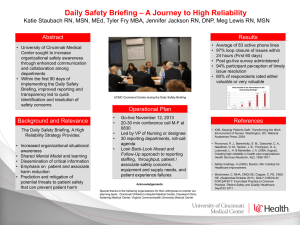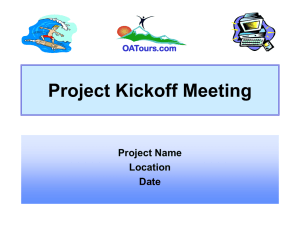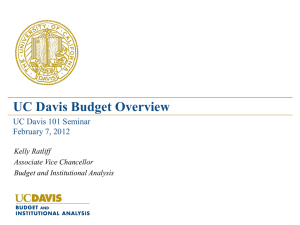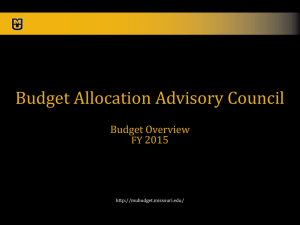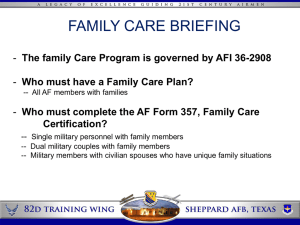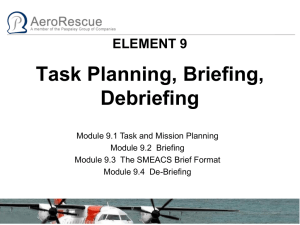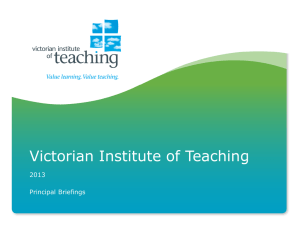754 million - Budget & Institutional Analysis
advertisement
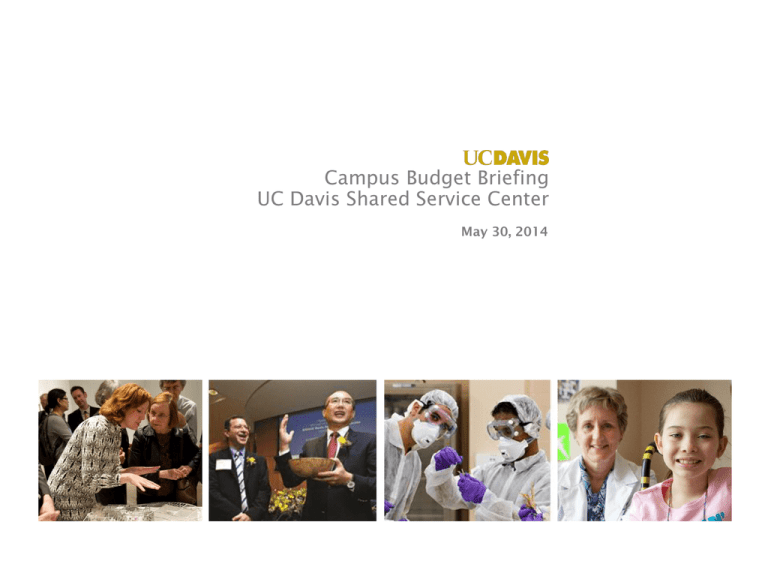
Campus Budget Briefing UC Davis Shared Service Center May 30, 2014 UC Davis Campus Facts Started in 1905 as the "farm" for UC Berkeley. Founded as a separate campus in 1959. Students as of fall 2013: 34,000 4 colleges, 6 professional schools 99 undergraduate majors 90 graduate programs Member of the Association of American Universities Research Funding: 23 intercollegiate sports 1st in the world for agriculture (NCAA Division I) and forestry (QS World University Rankings, 2014) ranked public universities UC Davis accounts for $6.9 billion and 69,000 jobs 9th ranked public university 22,500 employees by U.S. News & World Report (4,100 academic, 14,900 staff, 3,500 students) 1st in Sierra Magazine 2012 • 13th among U.S. • 21nd among public and private universities Health System: • Top Hospital and "A" Hospital Safety Award, Leapfrog Group • Consumer Choice Award, National Research Corporation “Cool Schools” Survey Annual Budget Briefing – May 30, 2014 | 2 Vision of Excellence A Strategic Framework UC Davis is the University that transforms lives while it celebrates humanity and inspires breakthroughs We are One Community that aspires to make this university the UC of the 21st Century We foster a vibrant community of learning and scholarship We drive innovation at the frontiers of knowledge We embrace global issues We nurture a sustainable future and propel economic vitality We champion health, education, access and opportunity We cultivate a culture of organizational excellence, effectiveness and stewardship Annual Budget Briefing – May 30, 2014 | 3 CAMPUS BUDGET PROCESS Annual Budget Process Call letter – February 24, 2014 Budget meetings – April/May Faculty Hiring call – April Financial Stability, Invest in Strengths, Rebuild Foundation BALANCED APPROACH Revenue – 2020, State, Other Fixed costs – salaries, benefits, retirement, deferred maintenance 2013-14 Projections UC Davis Revenue $3.8 billion Investments – capital (classrooms, maintenance), graduate student support, library, student success (honors, advising) Indirect Cost Recovery $124 (3%) Tuition $413 (11%) Grants and Contracts $513 (14%) Federal (Hatch, Pell Grants) $56 (2%) Bridge with reserves Sales and Service, Auxiliary $410 (11%) State Unrestricted $342 (9%) BUT, CHALLENGES REMAIN Gifts, Endowments, Interest, Other $154 (4%) Continue efficiencies – Administration for 21st Century Tuition policy –multi-year framework is needed Medical Center $1,531 (41%) State Designated and Restricted $46 (1%) Student Fees $166 (4%) Core fund shortfall of $13M likely to increase to $21 million Fixed costs for state/tuition Estimate Benefits, composite rate increase $12.3 33% Faculty, merit and 3% $13.5 36% Staff, 3% and contracts $8.5 23% Deferred Maintenance, renewal $2.8 8% Total $37.1 100% Annual Budget Briefing – May 30, 2014 % | 4 Incentive-Based Budget Model MODULES Undergraduate tuition. Model uses student credit hours, majors and degrees awarded. Incentivizes cross college teaching. FRAMEWORK PROCESS Revenue allocation model; allocates funds to deans not departments White papers as tool to provide analysis and frame policy decisions Provost retains portion centrally for cross-subsidy and strategic investments Incentives drive growth allocations and re-allocations of base Uses principles and metrics for accountability Use transition and bridging strategies Recognize significance of cultural change Indirect Cost Recovery. 37% of Indirect Cost Recovery allocated to unit generating revenue. Summer tuition. Model uses student credit hours with new, direct participation by deans. Graduate tuition. New model removes NRST barrier for 2nd and 3rd year International PhD students. Incentives for masters and TAs. Faculty resources. More autonomy for deans and central funds to support Hiring Incentive Program (HIP) Provost allocation. Fund common goods and provide subsidies across academic units. Annual Budget Briefing – May 30, 2014 | 5 2020 Initiative GOALS PROCESS FRAMEWORK Ensure access for California students and increase opportunities for national and international students Task forces – academic resources, enrollment management, facilities 5,000 undergraduates – 500 residents and 4,500 national and international; more opportunities for graduate and professional Consultation and refinement of initial proposal Stabilize our finances Academic Senate review Increase tenure-track faculty to strengthen research, teaching and outreach Decision to proceed Implementation plan 300 faculty (tenure track and teaching faculty) Rate of growth adjusted to capacity in human and physical resources Internationalize the campus Boost regional economic development and create new jobs Annual Budget Briefing – May 30, 2014 | 6 2020 Initiative Early Results Fall 2011 to Fall 2013 UNDERGRADUATE STUDENTS All applications have increased: residents (+11%), national (+146%), international (+355%); higher selectivity FACULTY INVESTMENTS Over 110 searches authorized this year $26+ million – investments for instructional programs and student success including advising, gateway courses, TAs, classroom enhancements, student counseling, recruitment and yield Received 76 Hiring Incentive Program (HIP) proposals More applications from underrepresented students: +27% Capital Program (new and renewal): Added 1,500 undergraduates; proportion national/international increased from 4% to 7% • Laboratory and Office space • Classrooms (e.g., 600-seat, Walker Hall, Testing Center) • International Center • Student Housing Annual Budget Briefing – May 30, 2014 | 7 Staffing Trends 2008 to 2013 MIDDLE MANAGEMENT FOR ALL FUNDS DECLINED Number of supervisors declined by 15 percent (~230 FTE) change Staff-to-supervisor ratio increased ~5 staff per supervisor to ~6 staff per supervisor 1,775 -5% THE ACADEMIC CORE HAS BEEN OUR HIGHEST PRIORITY FOR STATE FUNDS/TUITION 3,287 2,913 -11% SMG and MSP 289 220 -24% Students 1,327 1,445 9% Total 6,766 6,353 -6% Core Fund employees 2008 2013 1,863 Staff Ladder Faculty and Other Academic The number of staff working in general administration units declined from 11% of all employees to 9%. Number of faculty and academic employees on core sources declined by 90 (5%), while the number of staff declined by 443 (11%). Among staff, the number of managers and senior professional positions declined by 24% while the number of all other staff positions declined by 11%. Annual Budget Briefing – May 30, 2014 | 8 Deferred Maintenance 2005-2013 DM Investment RECENT INVESTMENTS 2005-2013 investment: ≈ $22 million Statewide Energy Partnership Program (SEPP): 2010 -2014: ≈$60 million Investments are opportunistic and intended to leverage modest base budget (<$1M) Debt (Facilities Renewal) $4,414,000 BACKLOG In 2012, UC Davis worked with a facility asset advisor to determine DM backlog on campus. Need of $1.3 billion was identified One of highest backlogs in the system FUTURE INVESTMENTS Permanent Allocation One Time Funds $12,754,722 $4,900,000 Chancellor and Provost established biannual allocations as part of campus and health system budget process to provide a source for a multi-year investment plan of $75 million Many capital projects include substantial renewal elements Capital plan also includes many IT infrastructure projects Annual Budget Briefing – May 30, 2014 | 9 Research Outcomes and Initiatives In 2012-13, research grew to $754 million, making UC Davis the only UC campus to have experienced a constant increase in funding in recent years. In 2012-13, investment in research and scholarship = $18 million through the Office of Research. RISE (Research Investment in Science and Engineering) = $11 million over 3 years IFHA (Interdisciplinary Frontiers in Humanities And Arts) = $3.6 million over 3 years Research Bridge = $3.0 million to increase support of the research bridge program Annual Budget Briefing – May 30, 2014 | 10 The public phase of The Campaign for UC Davis began in October 2010 with the goal of raising $1 Billion from 100,000 donors. As of March 2, 2014, $1.081 billion has been raised from 107,328 donors. For the 2013-14 academic year, over $108 million has been raised to date. Annual Budget Briefing – May 30, 2014 | 11 One World, One UC Davis UC Davis is a global network that is transforming lives, celebrating humanity and inspiring breakthroughs. This message is already integrated in our Health System, Athletics and the World Food Center Annual Budget Briefing – May 30, 2014 | 12 Improving the Student Experience A blue-ribbon committee identified several issues that need to be addressed: Advising Financial Aid Counseling Time-to-degree In 2013-14, UC Davis is investing more than $20 million in Advising, TAs, Counseling Services and support for Undocumented Students. We are also initiating the first Faculty in Residence program in our student dorms. Annual Budget Briefing – May 30, 2014 | 13
